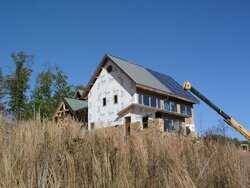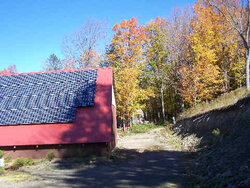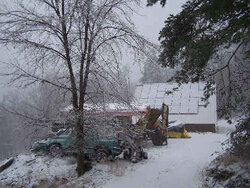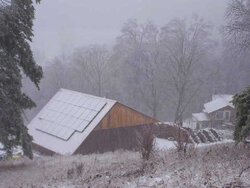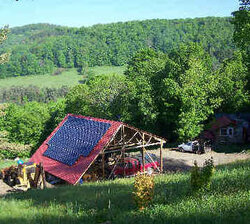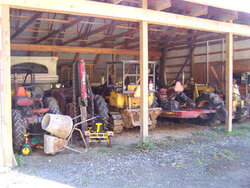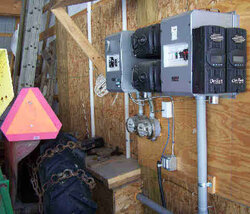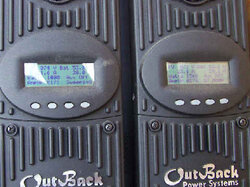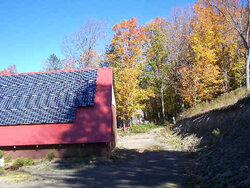j00fek said:
jdemaris, how does your system perform in the winter. im trying to figure out how it will work after snow for instance.
Winter in itself is no problem - in regard to snow and cold. Solar panels often "overproduce" and exceed their normal wattage ratings in extrreme cold. Same can happen in bright sun when there's a lot of snow cover. Snow is also never been a problem. Even after a two-three foot snow storm, they clean themselves off fast. Even when they get iced - as soon as the sun hits them, they warm up enough to self clean.
One minus to winter is that the solar angle changes - so you get less direct sun per day. But, the big problem is our particular climate here. Come late February and sometimes all of March - it's just dark, gloomly, sunless, and extrremely windy. Perfect time of year for a wind generator and lousy time of year for solar panels. That is a sort of "microclimate" for this area. Often, just 20 miles away the weather is much nicer, in the valleys away from the mountains.
Here's a record of my last "calender" year - starting in June 2007 and ending June 2008. Note the months of October, November, January and February. Those are the four dark months I had to actually use electricity from the power company. Any month that shows a negative reading is a month when I made more power than I used and spun the meter backwards.
6/26/07 - 7/2/07 negative 54 KWh meter reading 99946
7/2/07 - 8/1/07 negative 346 KWh - meter reading 99600 $16.21 service charge
8/1/07 - 8/30/07 negative 304 KWh - meter reading 99296 $16.21 service charge
8/30/07 - 9/28/07 negative 299 KWh - meter reading 98997 $16.21 service charge
9/28/07 - 10/30/07 negative 144 KWh- meter reading 98853 $16.21 service charge
10/30/07 - 11/30/07 used 132 KWh from accum. credit, 98853 reading. $16.21 charge
11/3/0/07 - 1/2/08 used 449 KWh from accum credit, 99,434 reading, $16.21 charge
1/2/08 to 2/1/08 used 215 KWH, meter read 99649 $16.54 charge
2/1/08 to 2/29/08 360 KWh used, meter read , last credit of 297 KWh used $24.96 total bill
3/1/08 to 3/27/08 negative 17 KWh, meter read 99992 $16.54 bill
4/1/08 to 4/29/08 negative 282 KWh, meter read 99710 $16.54 bill total neg now 299 KWh
4/29/08 - 5/29/08 negative 214 KWh, meter read 99496 $16.54 bill
6/27/08-7/31/08 negative 361 KWh, meter read 98848


